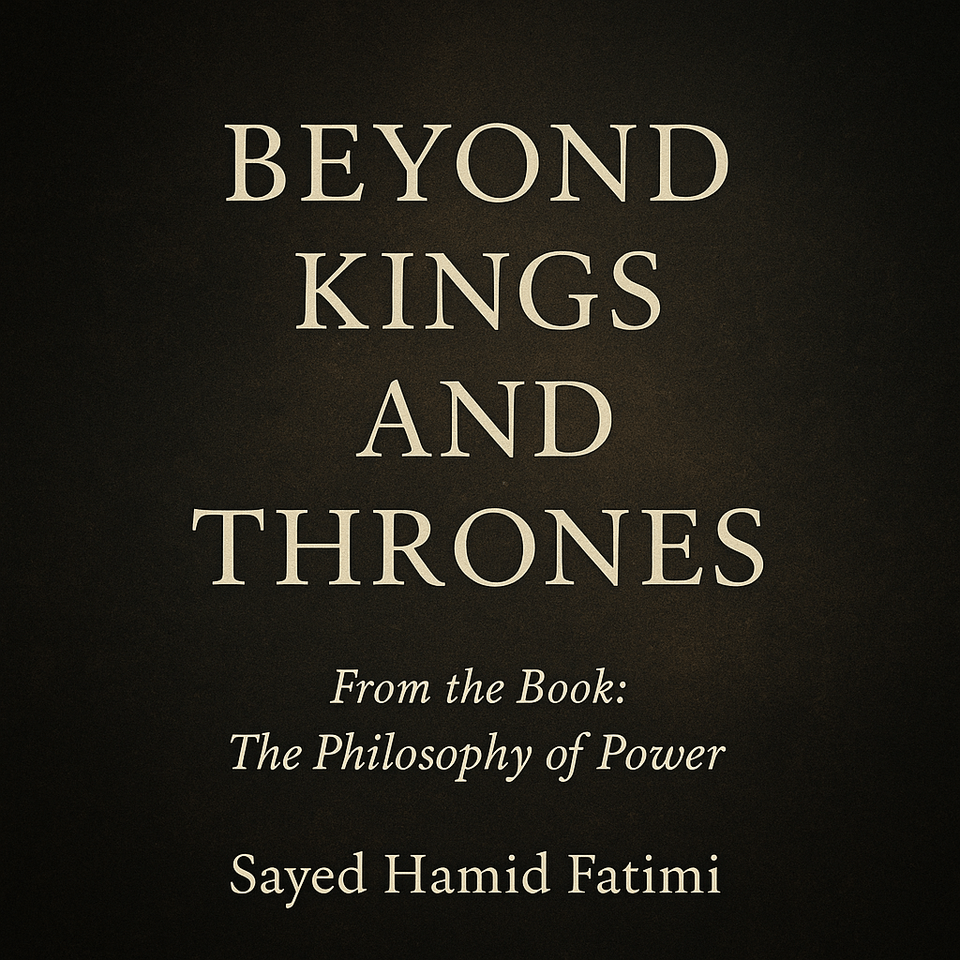
The Transactionalization of Everything
We feel the new atmosphere of exchange everywhere: in inboxes measured by response-time scores, in feeds whose metrics decide who is seen, in customer-support queues that mysteriously shorten for some and not for others. The everyday textures of life are now stitched with timers, counters, and leaderboards. We sense it when a message typed with care is outbid by a meme, when a thoughtful bug report is triaged behind a louder complaint, when a late reply costs us a micro-slice of credibility that will be remembered by a system long after the human on the other end has forgotten.
Favours turn into points, replies into performance, and time into inventory. The familiar social world still exists, but it now clears like a market—priced by algorithms, settled in dashboards, and remembered by ledgers we rarely see. If yesterday’s exchanges were narrated by etiquette and memory, today’s are parsed by software. Even generosity acquires a shadow price when platforms turn gestures into signals that can be ranked, routed, and resold.
Money hasn’t vanished; it has been joined by other mints. Attention, data, reputation, access, optionality, and even safety now move through conversion ladders that ultimately settle in cash. A like becomes a visit becomes an email becomes a subscription becomes a sale; a download becomes a profile becomes a segment becomes an ad impression becomes revenue. Not every step is monetized directly, but each carries a probability of settlement, and those probabilities are themselves tradable.
Wherever conversion is possible, a hidden price emerges. Wherever there is a price, there is a protocol. Wherever there is a protocol, there is power. Naming that chain is the beginning of lucidity. When we can describe the rails beneath our relationships, we gain choices we didn’t know we had: to opt out, to fork, to renegotiate the terms, or to build alternative rails.
A Crisp Lens: T5
Any interaction can be read as a transaction if you can name five elements:
Asset → Price → Ledger → Protocol → Power.
Call it T5.
Asset: What moves? Money, time, attention, data, status, leverage, safety. Sometimes the asset is intangible—future optionality, the right to be left alone, or someone’s benefit of the doubt. If it can be transferred, constrained, or accumulated, you can treat it as an asset for the purpose of analysis.
Price: Where is the cost? Explicit (fees) or shadow (friction, lock-in, privacy loss, anxiety). Many prices hide in timing—latency, unpredictability, and the cognitive overhead of constant vigilance. Some prices are moral: the small wound of acting against your values to satisfy a metric.
Ledger: Who remembers? Bank, CRM, feed ranking, HR file, credit bureau, community memory. Ledgers do not merely store the past; they predict the future by shaping who is invited, who is trusted, and who is paid. The strictest ledgers are invisible: the ones in other people’s heads and in models that will never be audited.
Protocol: What rules? ToS, norms, law, UI affordances, recommendation engines. Protocols set interfaces and make some paths easy and others expensive. They are the constitution of the exchange, even when they masquerade as design choices.
Power: Who sets terms? State, firm, “algorithmic monarch,” or the crowd. Power compounds when it can both set the rules and write the ledger. The strongest power is the power that feels like nature—rules so ambient we forget they could be otherwise.
Once you can name each part, you can see the transaction beneath the talk. And once seen, you can begin to test small changes: move the asset, rotate the price, open the ledger, contest the protocol, or redistribute power.
Why Everything Feels Transactional Now
The texture of daily life changed because relationships now pass through programmable intermediaries. Platforms turn sociality into protocol—rules, interfaces, ranking functions—and protocols come with meters. Meters invite targets; targets invite gaming; gaming invites counter-measures; soon the relationship is mediated by an arms race of metrics.
What can be recorded becomes data; what becomes data can be priced, even when no currency symbol is visible. The calendar entry is a promise; the promise is a liability; the liability can be repriced as risk. Risk that was once communal is increasingly shifted onto individuals as balance-sheet obligations: the loan for education, the deductible for health, the volatility of housing, the churn tax of precarious work.
Institutions now govern by metric. We elevate what we can count, and then we behave to satisfy the count. Goodhart’s Law follows like weather—once a measure becomes a target, it stops measuring. We witness this in education (test scores over learning), in medicine (coding compliance over care), and in media (engagement over understanding). The measure colonizes the meaning.
Attention markets sit atop this stack, offering “free” services that monetize future choices through present focus. Layer AI on top and legibility increases: more signals to rank, more segments to sort, more dynamic prices to test, more precise nudge-points to exploit. A system that sees more can settle more—and will try.
None of this is evil by necessity. It is simply the logic of a world where computation can see what can be quantised and therefore can settle. The question is not whether to have markets, but where to place them, how to constrain them, and what other value-registers we insist on keeping alive.
The New Currencies
Attention is the gateway tender—seconds of focus that convert into data. Every scroll is a bid; every pause is a payment; every share is leverage. We spend from a finite budget, and platforms arbitrage our future decisions against our present impulses.
Data accumulates as behavioral history, functioning like prediction capital precisely because it reduces uncertainty about what we will do next. The less uncertainty, the better the price discrimination. In its raw form data feels inert; in aggregate it becomes a map of our habits, vulnerabilities, and thresholds.
Reputation is the public derivative of those histories, expressed as stars, scores, and follower graphs that travel across contexts and shape opportunity. A single one-star review can move thousands of dollars; a blue tick can open doors that skill alone cannot. Reputational capital is portable but brittle; it appreciates slowly and can crash overnight.
Access becomes a rationed privilege—invites, bandwidth, API quotas, customer-service priority—dispensed by the same systems that compute reputation. Doors that look open are often rate-limited. “Everyone can join” means “not everyone will be seen.”
Optionality—our capacity to exit, delay, or reverse—has a price as well. Lock-in converts optionality into rents: proprietary formats, non-portable identities, contracts with auto-renew clauses, ecosystems that punish switching. The less optionality you have, the higher your effective price in every future exchange.
Safety, often treated as background, is itself a currency in high-risk spaces: moderation priority, insurance coverage, immunity from arbitrary deplatforming. For many communities the first demand is not visibility but safety; without it, all other assets degrade.
Beneath all of it lies consent: the right to say yes or no to surveillance and shaping. In practice these currencies convert in ladders—attention → data → reputation → access → money—until we forget that the first trade began with our time. Remembering that origin is a moral act.
Where You May Already Feel it
Dating apps. They offer a market for intimacy, but visibility is rationed by rank. Micro-interactions become micro-contracts for micro-rewards, and the price of being seen is paid in swipes, boosts, and subscriptions. The app optimizes for churn-resistant engagement; your goal is to leave. Your incentives and the platform’s are politely misaligned.
Workplaces. The spreadsheet is no longer background; it is the stage. Colleagues become counterparties inside a KPI marketplace where internal ledgers—OKR dashboards, peer-review notes, project trackers—quietly determine promotions. “Alignment” can drift into performance theater when the visible metric diverges from the valuable work.
Public discourse. Posts are bids for attention, replies are liquidity, and outrage is leverage. The settlement layer is the engagement-rank of the feed, which prices novelty and volatility above context and care. Nuance is a cost center in a marketplace that rewards speed and certainty.
Customer service. It clears through status derivatives. Your lifetime value, churn probability, legal risk, and public influence score quietly determine how fast a human appears. The script says “we value all customers”; the queue says “we price you differently.”
States. Diplomacy transacts in security guarantees, access to corridors, currency swap lines, energy flows, and the priceless coin of legitimacy. Sanctions, standards, and narratives are instruments on the same balance sheet. Once you learn to read the ledgers, the pattern repeats from the smallest app to the largest alliance.
The Sting: Side-effects at Human Scale
When every corridor acquires a turnstile, commodification creeps. Intimacy begins to look like convenience, and friendship is confused with network utility. We start to ask of a relationship, “What does it do for me?” before we ask, “Who are we to each other?”
Moral injury follows when care is reclassified as a cost center and duty is replaced by deliverable. Professionals who entered to serve are nudged to perform for dashboards. The soul tires of pretending that the metric is the mission.
Inequality shifts from visible property to invisible protocol. Whoever writes the rules writes the rents: default settings, ranking criteria, moderation policies, recommender weights. The new aristocracy is not marked by titles but by terms.
Finally, we experience transaction inflation—an ecological glut of points, badges, tiers, and tokens. The symbolic supply expands faster than meaning can keep up. Signals cheapen even as systems insist they are ever more precise, and we become both over-measured and under-seen.
Necessary Pushback: Gift, Commons, Covenant
“Everything is a transaction” is an illuminating lens, not a totalizing doctrine. There remain domains where value is neither priced nor settled in private ledgers. We must protect them precisely because they do not defend themselves with yield.
Gift resists accounting. It creates surplus trust and binds without balance sheets. A gift says, “I am investing in a relationship, not purchasing an outcome.” It tolerates asymmetry in the short run because it seeks reciprocity in the long run.
Commons depend on stewardship rather than strict exchange. Access is governed by duty and by rules designed to preserve the resource across time. Commons flourish when we valorize maintenance, not just growth; when we pay the janitor of the public square as seriously as we pay the architect.
Covenant binds by promise and principle. It says some claims are inalienable and therefore not for sale—children, votes, bodies, the right to speak truth without buying reach. Covenants create islands of pricelessness inside oceans of price.
The task is not to erase markets but to prevent the market frame from crowding out every other frame. We keep plural values alive by making space where price cannot fully speak and by insisting that some ledgers stay communal and some rules stay humane.
Design Moves to De-Weaponize the Frame
If protocol is where power hides, protocol is also where reform begins. Favor protocols over platforms—open rules, portable reputation, and genuine exit rights make concentration harder. Where platforms must exist, design them to be forkable.
Practice thick consent. Permissions should be granular, revocable, and compensated when resale occurs. Make the default minimally invasive; make the invasive path explicit and slower. Eliminating dark patterns is not cosmetic; it is constitutional.
Build commons-first experiences that make sharing and trust easy even when they are not directly monetized. Equip communities with their own ledgers—transparent, auditable, and governed by those who contribute, not merely those who pay.
Design anti-Goodhart regimes by rotating metrics, auditing them for exploitability, and capping the influence of any single score. Publish the failure modes of your metrics the way we publish the side effects of medicine.
Experiment with relational accounting—systems that track obligations, reciprocity, and care, not just billables. If you don’t count mentoring, maintenance, conflict resolution, and civic labor, you will slowly design institutions that cannot produce them.
Introduce friction for dignity. Slow the path for high-stakes actions (mass bans, irreversible deletes, large financial moves) and accelerate the path where harm is low (export data, appeal decisions, switch providers). In a world optimized for speed, restraint itself becomes a right.
Working with T5 (practical guide)
T5 is less a theory than a stance of attention. When something feels off, begin by naming what is actually moving—money, time, future choices, or someone else’s trust. Be concrete: write it down.
Then find the price. Is it hiding in latency, anxiety, lock-in, or surveillance? If a feature is “free,” ask what it makes expensive somewhere else.
Identify the ledger that will remember the exchange—an algorithmic rank, an HR file, a credit bureau, a blockchain, or the memory of a community. If the ledger is private, how will you contest an error? If the ledger is public, how will you protect dignity?
Name the protocol you are consenting to. Do you possess the rights to exit, fork, or appeal? Are the rules legible enough that a newcomer could predict the outcome without insider knowledge?
Finally, follow the compounding. Who gains durable leverage from the settlement that follows? If repeated a hundred times, does this exchange centralize control or distribute it?
Often a small move changes the feel. Shifting from a private to a shared ledger increases legitimacy. Rotating the metric disarms performance theater. Replacing a dark pattern with thick consent restores dignity. Making identity and assets portable restores optionality and makes coercion expensive. When a choice is expensive to reverse, slow down by design.
Case Sketches
The “free” social app. The true asset is your attention and data; the price is the shaping of your future choices. The ledger is the ad-tech graph; the protocol is the recommender plus a maze of terms of service; power accrues to the platform and to buyers of your time.
A viable redesign offers a paid, privacy-preserving mode with portability of your social graph and settings; clear, revocable data permissions; and a public audit of ranking criteria. When exit is credible, governance becomes accountable.
Workplace promotions. Here the asset is reputation fused to output; the price includes politics and OKR theater; the ledger is the performance system; and the protocol is a rigid review cycle with a single score.
Shift to multi-source, rotating criteria, publish compensation bands, and guarantee a right to narrative rebuttal. Weight mentorship, maintenance, and institutional goodwill. The market for merit then behaves less like a casino and more like a commons.
Public discourse. The asset is legitimacy; the price is outrage performance; the ledger is engagement rank; and the protocol is virality mechanics that reward speed and certainty.
Dampen velocity, elevate civility signals, and create protected deliberation spaces with slower clocks and reputational escrow. This does not silence speech; it restores signal by refusing to price rage more richly than reason.
Consumer credit. The asset is future income; the price is compounding interest plus behavioral penalties for being poor; the ledger is the bureau; the protocol is opaque scoring and adversarial fees.
Reform by capping fee complexity, mandating explainable decisions, and offering built-in repayment flexibility. Optionality reduces default; transparency reduces predation.
A Note on Dignity
The goal is not to abolish exchange; it is to protect the parts of life that cannot be faithfully priced. Markets are sharp tools for allocation; they are dull instruments for love, truth, and meaning. When we forget this, we become efficient and unwise.
We can accept markets as one register of value while refusing to let them set every key. Some things must remain priceless, unpriced—not because they lack value, but because their value is corrupted by the attempt to meter it. The point is not purity; the point is proportion.
This is not nostalgia. It is architecture. We are choosing what kinds of beings our systems make us become.
A Short Exercise
Choose one arena—your DMs, your next 1:1, or your publishing workflow. Map three recent interactions with T5. Name the asset, the price, the ledger, the protocol, and the power in each.
For each, change exactly one element: move a private ledger into the open, rotate the metric, replace a dark pattern with thick consent, or add an exit right. Write down how the atmosphere changes. Share the map with someone else; the act of co-witnessing is itself a governance move.
Pay attention not just to outcomes but to atmosphere. You will feel the difference before you can model it. Then, if it helped, institutionalize the new pattern so it outlives your attention.
Appendix: a One-page T5 Cheatsheet
When you map an exchange, remember the families of each component:
- Assets include money, time, attention, data, reputation, access, optionality, safety, and consent.
- Prices appear as fees, friction, surveillance, anxiety, lock-in, risk transfer, and forced velocity.
- Ledgers range from banks and credit bureaus to engagement graphs, HR files, dashboards, blockchains, and the memory of a community.
- Protocols include terms of service, social norms, interface affordances, algorithms, and law; they set interfaces and clocks.
- Power accrues to states, firms, platforms—the “algorithmic monarchs”—or, occasionally, to organized crowds with credible exit.
The orienting questions are simple and repeatable: What moves? What costs? Who remembers? Whose rules? Who compounds? Answer them honestly, and most fog lifts. When in doubt, slow the clock, widen consent, open the ledger, and protect the priceless.
Want to go deeper on rules, ledgers, and “algorithmic monarchs”? Explore The Philosophy of Power.


